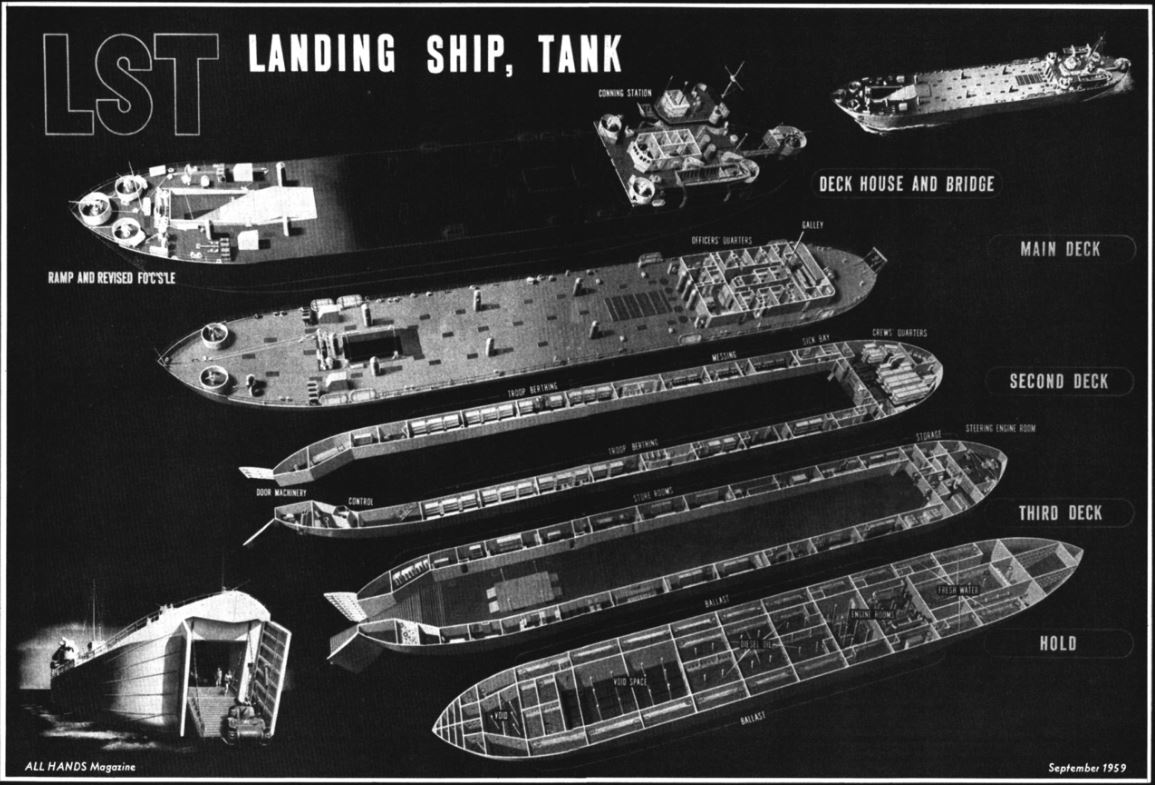HM LST 9
From Our Contribution
Remarks
The need for LST type craft was made evident during the evacuation from Dunkirk in 1940. Early LSTs were a variation of shallow draft ships used in Venezuela, and were built by Harland and Wolff in Belfast. However the British government sought to have later LSTs built in US shipyards freeing up their own to build Naval vessels. A total of 1,052 LST s were completed.
HM LST 9 was one of the early results of joint design colaboration. Built in the USA she was handed over to the British who commissioned her into their Navy as HM LST 9 and she was completed by the end of 1942. A total of 113 LSTs were handed over to the Royal Navy under Lend-Lease arrangements. She participated in the invasion of Sicily, the landings at Reggio, the invasion of Vibo Valentia, and the Anzio landings in the Mediterranean theatre, and the Normandy landings in the European theatre.
LST-9 also participated in the landings in Malaya, Operation Zipper. She was decommissioned on 4 May 1946, at Subic Bay, Philippines. LST-9 was returned to the US Navy on 1 June 1946, struck from the Navy list on 3 July 1946 and sold to Bosey, Philippines on 5 September 1948.
Armament - UK Lend Lease built vessels were to be outfitted with armament after convoying across Atlantic and included
- 1 x 12 Pounder anti-aircraft multi-barrel mount
- 6 x 20MM single gun mounts
- 4 x Fast Aerial Mine (FAM) mounts

